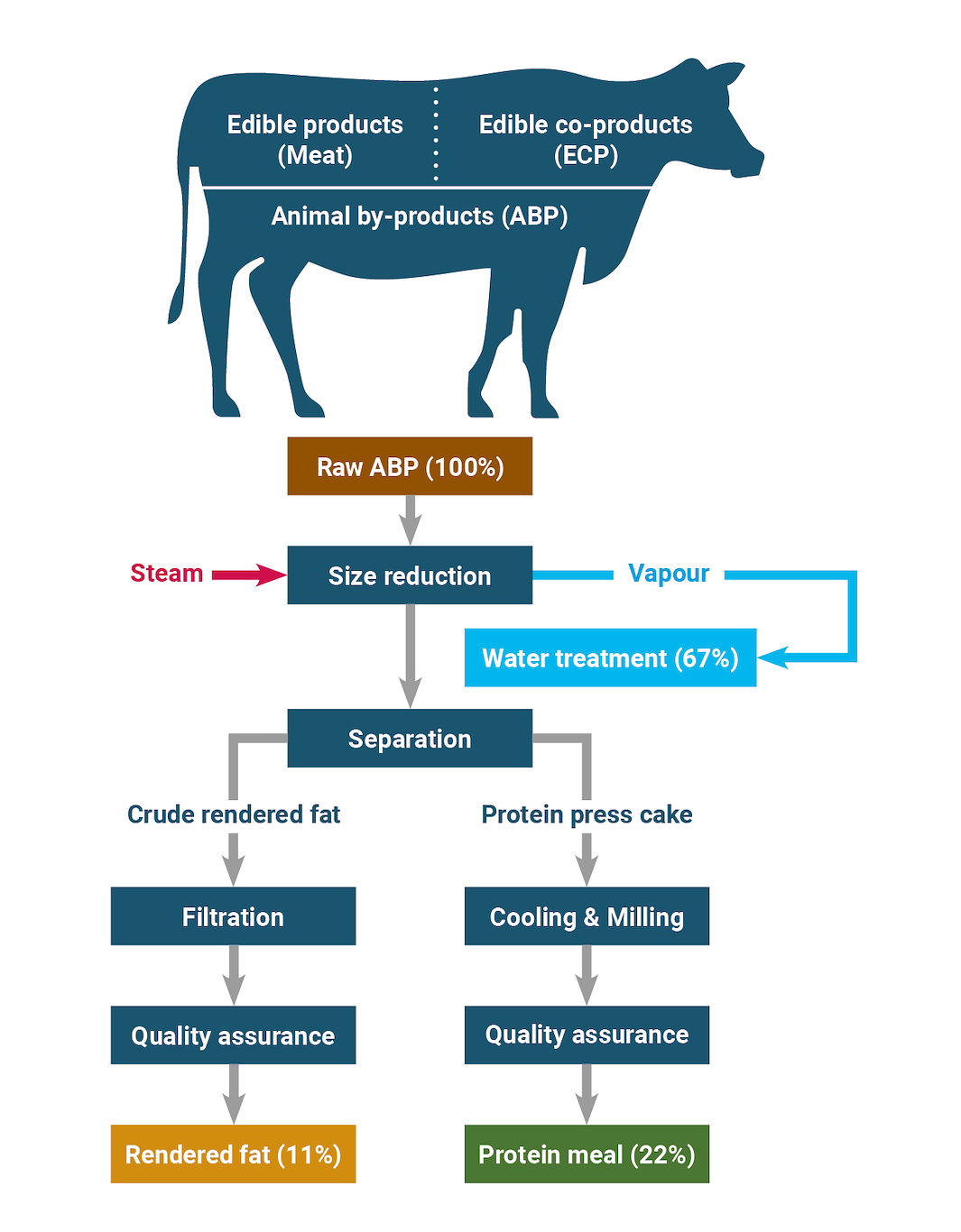Our Role In A Circular Bioeconomy For The Animal-Based Food Value Chain
Our vision is to make a significant contribution to a circular bioeconomy for a sustainable, healthy animal-based food value chain
Processing animal by-products (ABP) became a widespread and efficient practice in the meat industry in the 19th – 20th century yet most people outside the industry are probably unaware of this essential activity. The optimal utilisation of ABP is often overlooked in discussions on food and food waste yet this is one of the key elements in the sustainability of agriculture and food production.
Up to half of each animal produced for meat, milk, eggs and fibre is not for human consumption and, if not managed adequately, this material could create a biosecurity risk to society. The products of an animal are split between edible meat, edible co-products (those requiring further treatment to be edible) and ABP.
The cooking and drying ABP destroys pathogens and stabilises the material, enabling separation of the fat or oil and protein components into a range of marketable products. This process is known as rendering and is the most common ABP treatment process our members undertake.
A simple example of this, showing the % composition of the segregated fractions is shown in the figure below.

Our Circular Bioeconomy Model is sustainable and low carbon while helping meet society's needs for food, products and energy